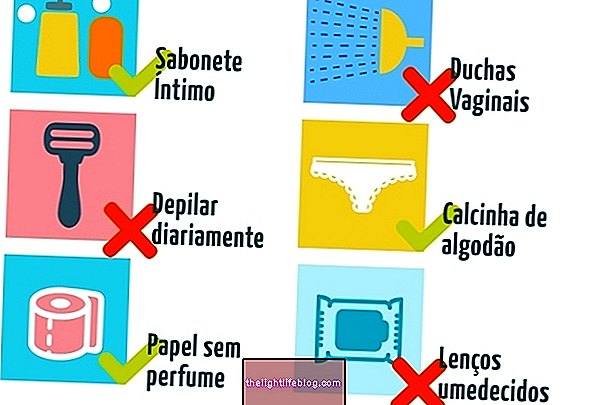The placenta accreta, also known as placental accretism, is a situation in which the placenta is not properly adhered to the uterus, making it difficult for it to exit at the time of delivery. This situation is one of the main causes of complications and postpartum death, as it is associated with a high risk of bleeding.
Placental accretism can be classified according to the depth of implantation of the placenta into the uterus at:
- Placenta accreta simple, in which the placenta invades part of the myometrium, which is the middle layer of the uterus;
- Placenta increta, in which the placenta fully penetrates the myometrium;
- Percrete placenta, in which the placenta can reach only the serous or adjacent organs.
It is important that the placenta accreta is diagnosed during prenatal examinations so that a cesarean section can be scheduled followed by a hysterectomy, which is usually the indicated treatment, and thus complications are prevented for the mother and baby.

Symptoms of Placenta Acreta
Normally, the woman does not experience any symptoms of changes in the placenta, so it is important that the woman performs prenatal care correctly so that this change can be identified.
Although signs and symptoms are not frequent in these cases, some women may experience mild vaginal bleeding, without pain and for no apparent reason during pregnancy, and it is recommended that you go to the gynecologist / obstetrician to identify the cause of the bleeding and start treatment. .
How the diagnosis is made
The diagnosis of placenta accreta must be made by means of imaging tests, such as ultrasound and magnetic resonance imaging, in addition to the measurement of blood markers that may indicate the change. These tests can be performed during prenatal care and the early diagnosis of placental accretism reduces the risk of complications for women. Get to know other prenatal exams.
Ultrasonography is usually indicated for patients considered to be at high risk and is a very safe technique for both mother and baby. The use of magnetic resonance imaging for diagnosis of the placenta accreta is controversial, however it can be indicated when the ultrasound result is considered doubtful or inconclusive.
Ultrasonography to identify the placenta accreta is more indicated in women who are at higher risk of developing this problem, such as women who are older, who have had uterine surgery before, including cesarean section, have uterine fibroids or who have had a placenta previous, in which the placenta develops partially or totally in the lower region of the uterus. Understand more about the placenta previa and how the treatment is done.
Possible risks
The risks of the placenta accreta are related to the moment when the placenta accreta is identified. The earlier the diagnosis is made, the lower the risk of postpartum hemorrhage, complications during delivery, premature delivery and the need for an emergency cesarean section.
In addition, there may be infection, problems related to clotting, bladder rupture, loss of fertility and, if not identified and treated correctly, can lead to death.
Treatment for Placenta Acreta
The treatment of placental accretism can vary from woman to woman, and a cesarean section can be performed together with hysterectomy, which is the medical procedure in which the uterus is removed and, depending on the severity, of the associated structures, such as tubes and ovaries.
In some cases, conservative treatment may be indicated to preserve the woman's fertility, with only a cesarean section and removal of the placenta, in addition to monitoring the woman after delivery to monitor possible bleeding or complications.
Was this information helpful?
Yes No
Your opinion is important! Write here how we can improve our text:
Any questions? Click here to be answered.
Email in which you want to receive a reply:
Check the confirmation email we sent you.
Your name:
Reason for visit:
--- Choose your reason --- DiseaseLive betterHelp another personGain knowledge
Are you a health professional?
NoMedicalPharmaceuticalsNurseNutritionistBiomedicalPhysiotherapistBeauticianOther
Bibliography
- LINHARES, Lorena Q. et al. Placenta acreta. Rev Med Minas Gerais. Vol 20. 2nd ed; 57-59, 2010
- MSD MANUAL. Placenta acreta. Available in: . Accessed on 06 Sep 2019


























